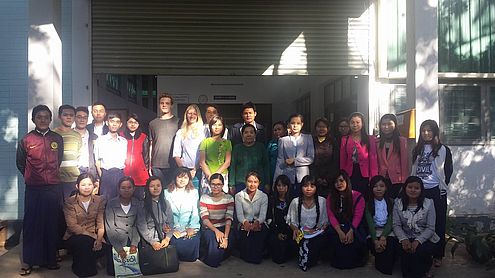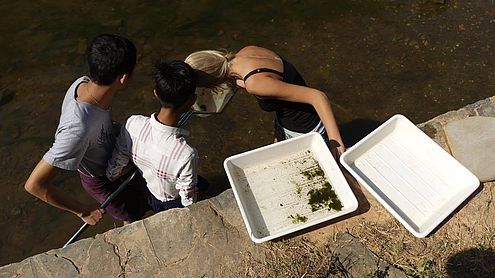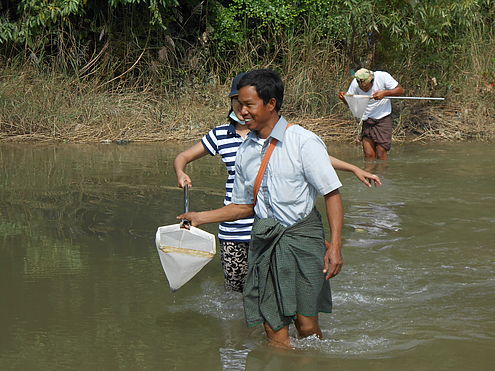Biomonitoring in man-made systems in the Kyaukse area, Myanmar
This research is done as part of the self-composed minor project of the bachelor programme at the TU Delft. Myanmar is a fast developing country when it comes to water management. This fast development can cause degradation in the water quality of the waterways. To investigate the water quality of the waterways, biomonitoring was introduced. Biomonitoring is an attractive tool to indicate the health of a waterway, because it is inexpensive and easy to perform. Biomonitoring uses indication species, macroinvertebrates, to indicate the water quality. Macroinvertebrates are small insects without backbone and visible to the naked eye. Biomonitoring was performed by using three different methods, namely MiniSASS, The Australian Method and The Asia Foundation.
The research focused on the channel system in the Kyaukse area. Kyaukse is a small town, 40 km south of Mandalay. In this channel system measurements at various sampling points were done. To check if biomonitoring is a suitable method for the indication of the water quality, physical water quality parameters were also measured at the various points. The results of the different biomonitoring methods and the physical water quality parameters were compared. This comparison led to the conclusion that biomonitoring is a useful tool for indicating the water quality in channel systems. Of the three methods used, The Australian Method gave the best indication of the water quality.
During this project I gave a presentation at the MTU (Mandalay Technological University), as a result two students joined me while measuring in the field. Nyein Thandar Ko (Burmese PhD student at the TU Delft) helped a lot too. Without their help it wasn’t possible for me to find the correct sampling locations. The map available of the Kyaukse channel system, obtained by the irrigation department of Mandalay, was written in Myanmar language and didn’t contain a scale. By asking locals we were able to find the right sites and do the measurements.
I am very pleased that I became part of this research. Working together with Nyein Thandar Ko was a great experience. I learned a lot about doing research, the fieldwork and Myanmar’s wonderful culture.


